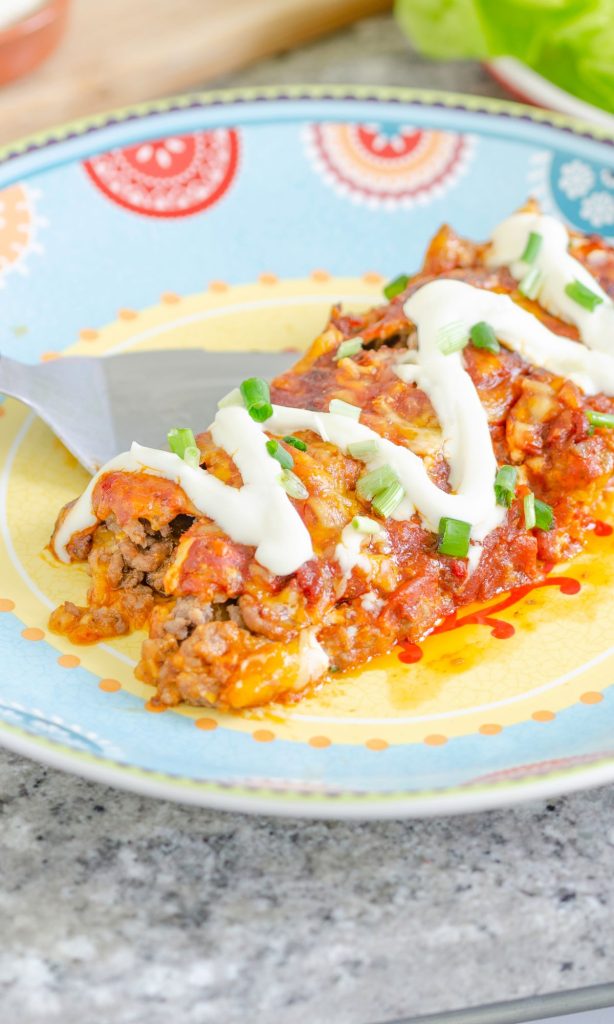Safe Heating Tips and Tricks
Yes, you can heat up sour cream in the microwave but it is important to keep a few things in mind. Whether you’ve got a dollop of sour cream on a plate of nachos or a spoonful in a sauce that needs warming, the microwave often presents itself as a quick solution for reheating food.
Key Takeaways
- Sour cream can be microwaved with care to avoid curdling.
- When reheating dishes with sour cream, gentle heating is key.
- Reheating sour cream can change the texture.
We all want to avoid the heartache of our favorite creamy toppings separating or curdling under the intense heat of the microwave. This comes up for me most often when I want to reheat my leftover Mexican food. In Texas, I eat a lot of TexMex so I am always so cautious when reheating anything with sour cream.
To ensure the integrity of sour cream’s texture, it requires a more nuanced approach than simply setting the microwave to high and hoping for the best. Knowing how to properly heat sour cream without damaging its structure can make the difference between a culinary delight and a kitchen mishap.

Can You Microwave Sour Cream?
When we find ourselves in the middle of a recipe or staring at a dish of leftovers that includes sour cream, the question arises: can we actually microwave sour cream? Yes, it turns out that we can microwave sour cream. However, we must do this cautiously to prevent undesirable results such as curdling or separation.
Here are some steps we can follow to microwave sour cream successfully:
- Transfer the sour cream to a microwave-safe container.
- Cover the container with a microwave-safe lid or paper towel to minimize splattering.
- Heat the sour cream on a low power setting, and in short increments, stirring between each one.
Here’s a quick reference table for heating times:
| Heat Setting | Time | Notes |
| Low | 20-second increments | Stir frequently to avoid curdling. |
| High | 10-second increments | Ideal for small amounts; watch to prevent splats. |
While microwaving sour cream can be part of food preparation, such as softening it for a recipe, or warming it with leftovers, it’s important to note that the sour cream will likely become thinner and possibly a bit grainy post-microwaving. Also, remember that microwave performance varies, so always monitor the process to achieve the best results.
So, the next time we find ourselves needing to warm up sour cream, let’s remember these tips for a smooth and successful experience.
Can You Reheat Leftovers With Sour Cream?
When we come across leftovers that have sour cream in them, we might wonder if it’s safe or even possible to reheat them. Good news: we can reheat dishes with sour cream. However, we should follow some simple tips for the best results.
- Temperature Control: We should always use a low heat setting to gently warm the leftovers. High heat can lead to the sour cream separating or curdling.
- Stirring: Periodic stirring helps maintain an even temperature and texture.
- Portion Size: If possible, we should reheat smaller quantities. This way, we ensure even warming and lower the risk of the sour cream splitting.
A common method we can use is reheating in the microwave. Here are some steps to help us:
- Microwave-Safe Container: Transfer the leftovers to a container that’s safe for microwave use.
- Low Power: Set the microwave to a low or medium power level.
- Short Intervals: Heat in short bursts, like 10 to 20 seconds, and stir between each interval.
- Cover to Minimize Splatter: We can loosely cover the dish with a microwave-safe lid or paper towel.
If we notice the sour cream has separated or curdled even after careful reheating, it’s not ideal, but the dish is still edible. It’s merely a texture change and not a sign of spoilage.

Microwaving Sour Cream Basics
When we’re looking to soften or warm up sour cream, we often turn to the microwave as a quick solution. The key is using the right containers and understanding the impact of heat on the texture of sour cream.
Appropriate Containers for Microwaving
Glass: We always recommend microwave-safe glass containers for their even heating qualities.
Plastic Container: We must be sure it’s labeled microwave-safe to avoid any harmful chemicals leaching into the sour cream.
Note: A common practice is to transfer the sour cream into one of these safe containers before microwaving.
Effects of Microwaving on Sour Cream Texture
The texture of sour cream can change when exposed to heat. When we heat sour cream in the microwave, the proteins and fats can curdle or separate, which affects its smooth consistency. To avoid this:
- Always heat at a lower power setting.
- Heat in short bursts, stirring periodically.
This gentle approach helps maintain the desirable texture of the sour cream.
Best Practices for Reheating Sour Cream
When we talk about reheating sour cream, it’s all about the gentle approach. Sour cream can enhance our favorite dishes like burritos or baked potatoes, but we need to handle it with care to prevent separation and spoilage.
Reheating Sour Cream in Dishes
Reheating sour cream that’s a component of a dish needs a soft touch. Whether it’s leftovers from last night’s taco feast or a scoop on a steaming baked potato, the key is to use low heat. Here are a few steps we follow:
- Spoon the sour cream on the dish after microwaving the main components separately. This will help maintain its texture.
- If the sour cream is already mixed in, heat the dish on 50% power to avoid high temperatures that could cause the sour cream to curdle.
For instance, when reheating tacos, we usually remove the sour cream, warm the taco, and then add the sour cream back on top.
Safety Considerations When Microwaving Sour Cream
When we reheat food, we should always be mindful of food safety. Sour cream is no exception. Here’s how we can minimize the risks:
- Ensure sour cream is properly refrigerated before use to reduce the chance of bacteria growth.
- If we suspect the sour cream was out for too long or smells off, it’s better to side with caution and not eat it to avoid food poisoning.
By handling sour cream properly, we can enjoy our comfort food with all its creamy goodness, warm and safe.

